The Complete Guide to Crafting Email Sequences that Effectively Promote Your Online Course
 Platform Review
Platform Review
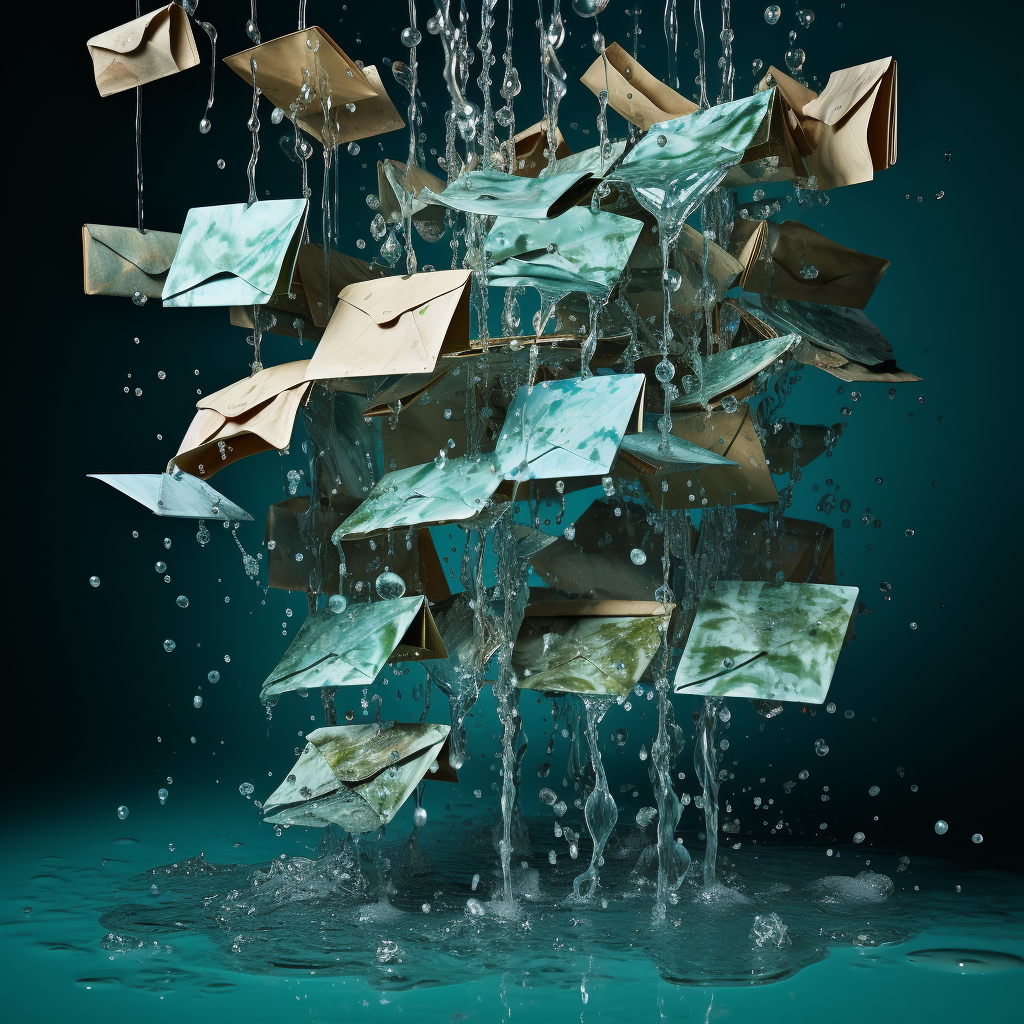
Wondering how to leverage email marketing to make more course sales? Here's a complete guide to crafting email sequences that effectively promote online courses.
Email marketing is one effective way to promote your online course. For one, it helps you get up close and personal with your target audience since your message goes straight into their inbox.
Email sequences, also known as email drip campaigns, are a series of automated emails sent to your target audience.
Through these emails, you can showcase your expertise, show off the value of your online course, and persuade your audience to sign up for the course.
In this guide, you’ll learn how to create an email sequence that successfully promotes your online course. You’ll learn everything from understanding your audience and crafting compelling subject lines to optimizing your emails for the best results.
You can also check out all the free guides available at the Course Creator Academy by clicking the Academy link on the top menu.
Let's dive in!
Understanding Your Audience
Your audience is the group of people you aim to reach and persuade to buy your online course.
So it's essential to understand who they are, what they need, and how your course can help them.
The truth is, understanding your audience will help you tailor emails that address specific pain points and goals so that you can successfully encourage them to take action.
And, to understand your target audience, start by defining your ideal customer. This means gathering their demographic information, such as age, gender, location, income, and education.
You can also collect their psychographic information, like interests, behaviors, and preferences.
Then. use this information to create buyer personas. Buyer personas are fictional characters that represent your ideal customer profile.
Here’s an example:
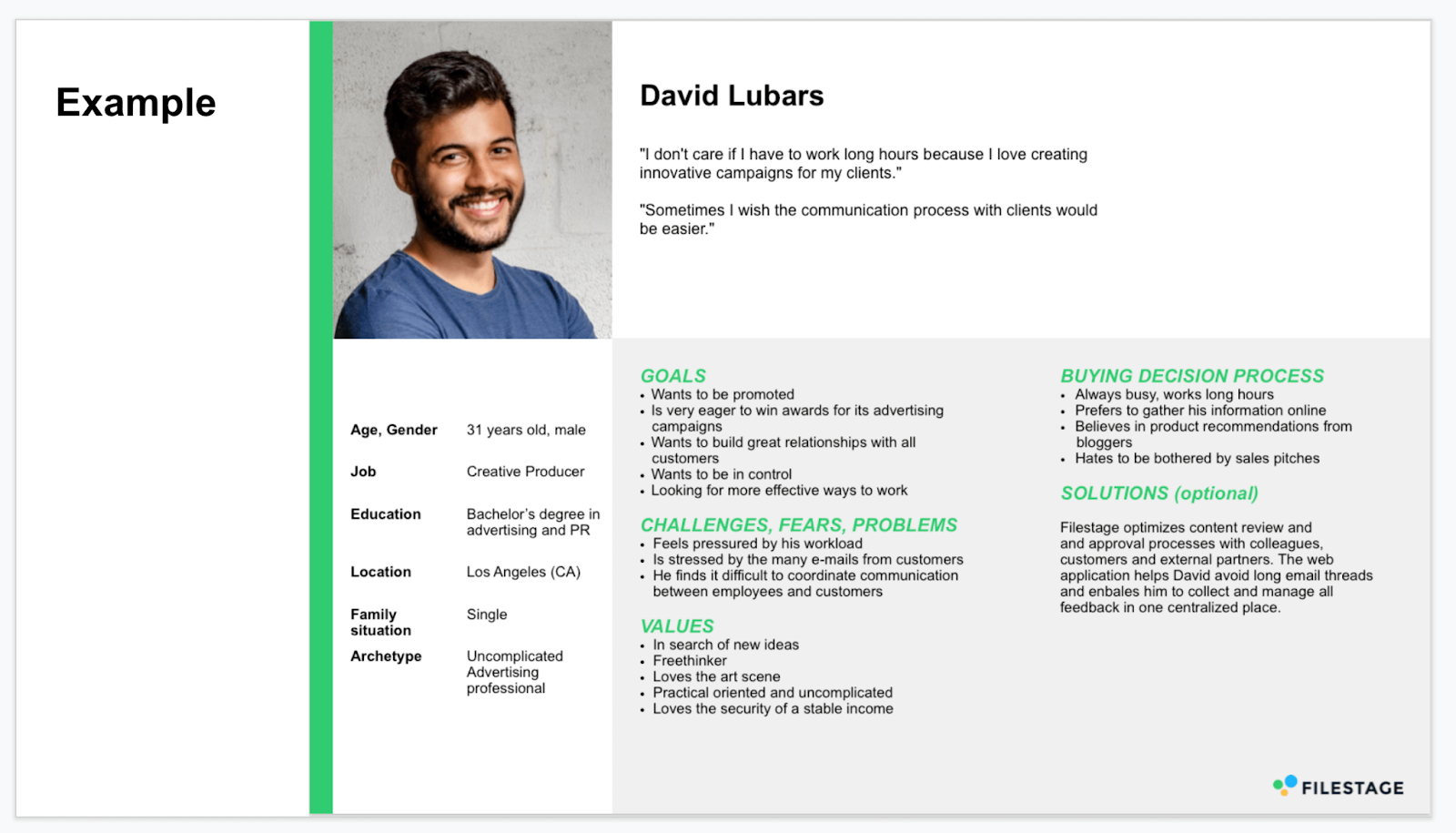
Like the above example, your buyer persona should be as detailed as possible.
Don’t forget to also include information that’s relevant to your marketing objectives. And, you should also consider the type of course and the niche you’re targeting.
For example, if your course is to help your audience learn affiliate marketing, you may also want to include information about your audience’s experience level, interests, and pain points related to affiliate marketing.
Consider also the type of affiliate products they want to promote or the specific marketing goals they have.
With details like these, you can then go ahead to create an engaging email sequence.
Setting Goals for Your Email Sequences
The next step is to set goals for your email sequences. Setting clear goals for your email sequences is crucial for targeted email campaigns.
And, without clear goals, you may risk sending unfocused emails that are ineffective.
Now, there are different types of goals you can set for your email sequence. Here are some of them:
- Drive enrollments for your online course.
- Encourage students to engage with your course content, complete assignments, and participate in discussions
- Announce new lessons to students
If you have a variety of courses, you can use email sequences to upsell or cross-sell courses to existing students.
When setting goals for your email sequences, it's important to use the SMART goal framework SMART goals are Specific, Measurable, Achievable, Relevant, and Time-bound. Here are some examples:
- Increase course enrollments by 20% in the next 30 days.
- Increase completion rates of course modules by 10% in the next 30 days
- Increase sales of “X” courses by 15% in the next 30 days.
By setting SMART goals, you can ensure that your email sequences are aligned with your objectives. So, you can track and analyze your email performance to continually improve your email marketing strategy.
Crafting Compelling Subject Lines
Subject lines are powerful. According to Digital Commerce 360, using the wrong subject lines could result in the deletion of your emails.
Invesp also reports that 47% of recipients open emails based on subject lines alone. Let’s see some more stats in the image below:
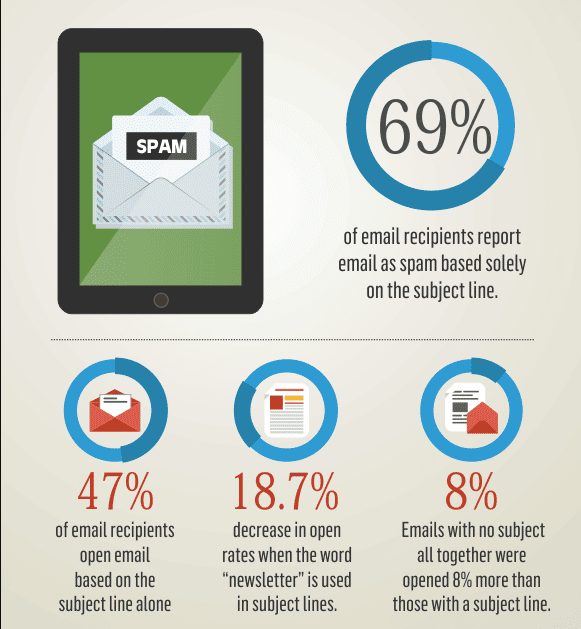
So, it’s safe to conclude that you must know how to create an email sequence with compelling subject lines.
A compelling subject line grabs the reader's attention and entices them to open your email. A good subject line should be short, descriptive, and engaging.
To make your subject lines compelling, you can use words and phrases that are exciting and invoke curiosity. Words like “unique,” “secret,” “exclusive,” and other powerful qualifiers can all grab your recipient's attention and encourage them to open your email.
Here's an example:

In the above example, adding the word “ferocious” makes the subject line “7 steps to become a ferocious self-editor” stand out. Compared to a bland “7 steps to become a self-editor”.
Now that’s how to work a compelling subject line! Also, adding a number to the subject line was an effective way to pique the reader’s interest.
Like the example below, you can also use questions to engage your target audience.
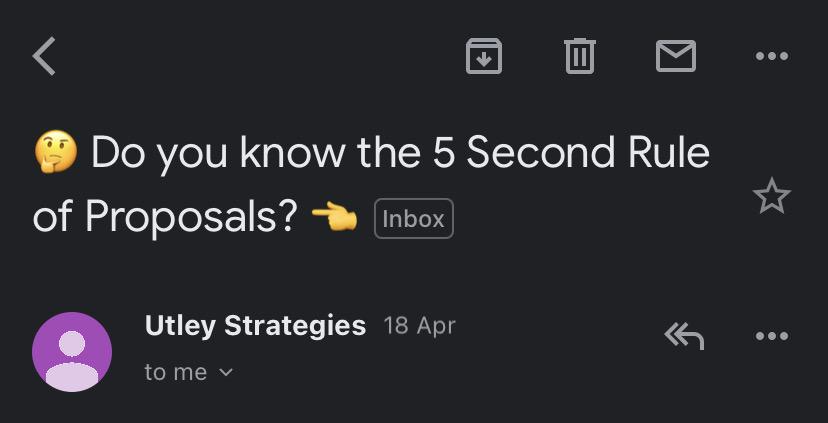
It's important to note that while you want your subject lines to be exciting, you should avoid using clickbait or misleading language like "open now" "read now" or "you must".
This can lead to a negative experience for the reader and could ultimately harm your reputation.
Instead, focus on being honest and clear about what the reader will get from your email.
Writing Engaging Email Copy
An engaging email is not only useful for e-commerce or SaaS email marketing. It’s also important for promoting online courses.
Knowing how to create an email sequence with well-written copy is one step towards getting conversions from your campaigns. Your email copy should also be attention-grabbing, persuasive, and tailored to your target audience's interests.
And, when writing your email copy, use language that speaks directly to your audience. Avoid using industry jargon or buzzwords that may confuse your readers. Keep your message simple, precise, and to the point.
Like Utley Strategies in the example below, use a natural tone that makes readers feel like you're having a conversation with them. You don't want to sound too promotional or robotic.
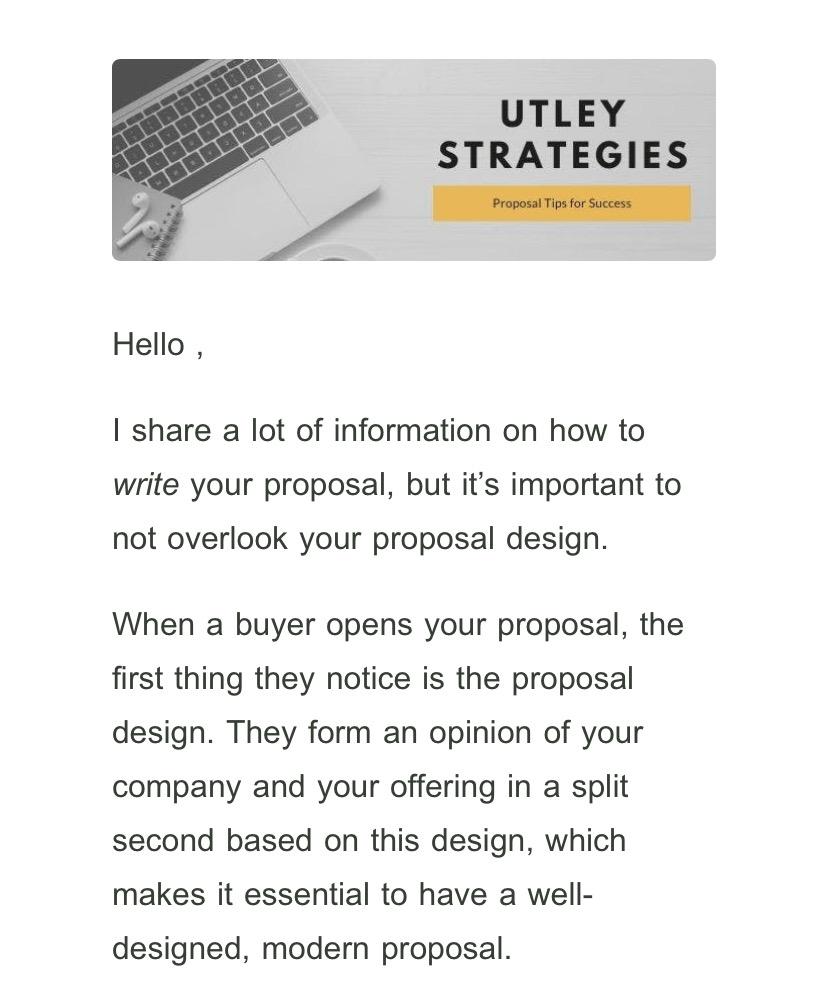
Personalization is another essential element of effective email copy. Start by addressing your readers by their names whenever possible.
This can help build rapport and trust and make your readers feel valued and heard. Thankfully, email marketing platforms like Mailchimp make this easier.
You can simply use the "First Name" merge tag as seen in the image below, and your entire list will receive a personalized email in their inbox. This can vary depending on the platform you use, so you may need to refer to their help guides.
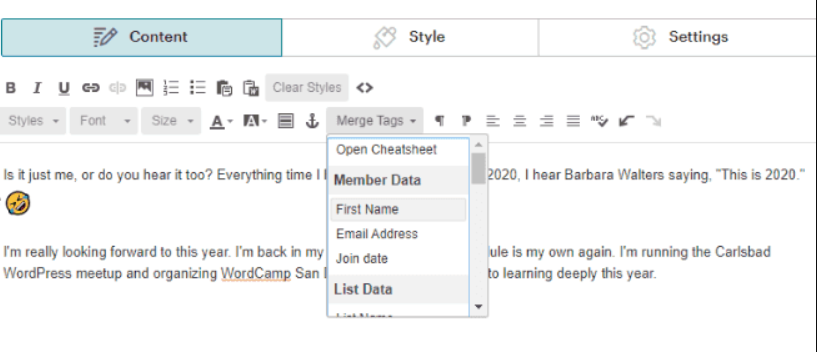
Including relevant visuals like images, gifs, or videos can also make your email copy more engaging and memorable.
Lastly, don't forget to include a clear call-to-action (CTA) that tells your readers what to do next.
Your CTA should be specific, relevant, and actionable, and should guide your readers toward taking the desired action, such as clicking on a link to your course sales page.
Sequencing Your Emails
The sequence in which you send your emails can greatly influence your subscribers' actions and decision-making.
Your email strategy should guide your audience through a thoughtful journey, gradually building trust and igniting interest with every message.
To effectively sequence emails for your online course, begin with an introductory series that warmly welcomes new subscribers.
The initial email should establish the tone for the entire sequence, clearly outlining what recipients can expect. For instance:

The welcome email should be followed by a series of educational content and informative emails that provide value to your subscribers, such as tips, insights, or case studies that demonstrate your expertise in your field.
It’s also a good idea to feature articles, customer videos, and other content pieces that may be valuable to your signed-up leads.
As you progress through your email sequence, it's important to gradually increase the level of urgency and call-to-action.
This can be done by highlighting high-level benefits and advantages of your course, addressing any objections or concerns your subscribers may have, and offering incentives or bonuses that encourage them to take action.
When sequencing your emails, avoid bombarding your subscribers with too many sales pitches or promotional messages too early in the sequence. This can make them feel overwhelmed or turned off by your course, leading them to unsubscribe or mark your emails as spam.
Instead, focus on providing value, building trust, and gradually persuading your subscribers to take action over time. It’s also advisable to create an email series template for different stages of your customer lifecycle or audience segments.
Automating Your Email Sequences
After mapping out your email sequences, it's important to make sure these messages reach the appropriate audience at the optimal time.
This is where email triggers prove invaluable. By using email triggers, you can create a sequence of automated emails that are dispatched several days after a prospect engages in a specific action, such as registering for your course or downloading a lead magnet.
Numerous service providers are available to help you automate your email campaigns, with popular choices including Mailchimp, ConvertKit, and Drip.
And, when selecting a service provider, ease of use should be a key consideration, particularly if you are a beginner.
However, to set up automated email sequences, you'll need to connect triggers to various stages of your customer journey. For instance, you might initiate an onboarding email series when someone enrolls in your course or clicks on a webinar link.
Furthermore, you can establish additional sequences to be triggered when a user hits particular milestones within your online course.
This strategy enables you to personalize emails, ensuring they are pertinent to the recipient's current stage in the buyer's journey.
Testing, Analyzing, and Optimizing Your Email Sequences
Evaluating, scrutinizing, and refining your email workflows are important components for a successful drip campaigns and automated email sequences.
Begin by verifying your link triggers to confirm they are functioning correctly. A practical approach is to ask a few trusted friends or colleagues to enroll in your course or interact with specific triggers.
This hands-on testing will provide valuable insights into whether your emails are being dispatched at the appropriate times and if they are effective in prompting conversions.
Another way to test your email sequence is by sending it to a small portion of your subscribers first, just to see how they respond to it.
Remember, when analyzing your email sequences, you should pay close attention to key metrics like open rates, click-through rates, and conversion rates. This data will help you identify what is working and what is not, so you can make the necessary adjustments to your email sequences.
So, you can check if your subject lines are compelling enough or if your email copy needs improvement. You can also segment your email list based on their interests and send targeted emails to improve engagement.
Troubleshooting and Overcoming Common Challenges
Troubleshooting involves identifying and resolving issues that may arise in your email sequences.
One common challenge is emails not being delivered or landing in spam folders. To overcome this, ensure that your email service provider is authenticated and that your emails are not being flagged as spam.
You can also include a note in your emails asking recipients to add you to their contacts or safe senders list.
If you're facing challenges beyond your control, it may be necessary to involve the customer support of your email service provider. They can help you troubleshoot and resolve technical issues that may be affecting your email sequences.
Conclusion
Email sequencing is a strategic way to promote online courses to a specific target audience. It helps you nurture them and encourage conversion.
This guide shows you how to create an email sequence that successfully engages your recipients.
Start by understanding your target audience and setting SMART goals. Craft compelling subject lines and engaging email copy.
Next, set up a well-ordered email sequence and automate it. Test, analyze, and optimize the email sequence. Finally, troubleshoot and handle challenges.
By following these tips, you can create an email sequence for your online course that yields the best results.
About the Author:

Baidhurya Mani is the founder of SellCoursesOnline.com. He regularly shares tips, tools, and strategies to help creators and entrepreneurs build a successful online course business.








 Start Here
Start Here Course Creation Journey Step by Step
Course Creation Journey Step by Step  Course Creation Software Reviews
Course Creation Software Reviews Online Course Marketing
Online Course Marketing Course Creation Tips & Tricks
Course Creation Tips & Tricks Course Equipment
Course Equipment Online Course Marketplaces
Online Course Marketplaces Revenue Reports
Revenue Reports Best Practices
Best Practices Frequently Asked Questions
Frequently Asked Questions Platform Reviews
Platform Reviews